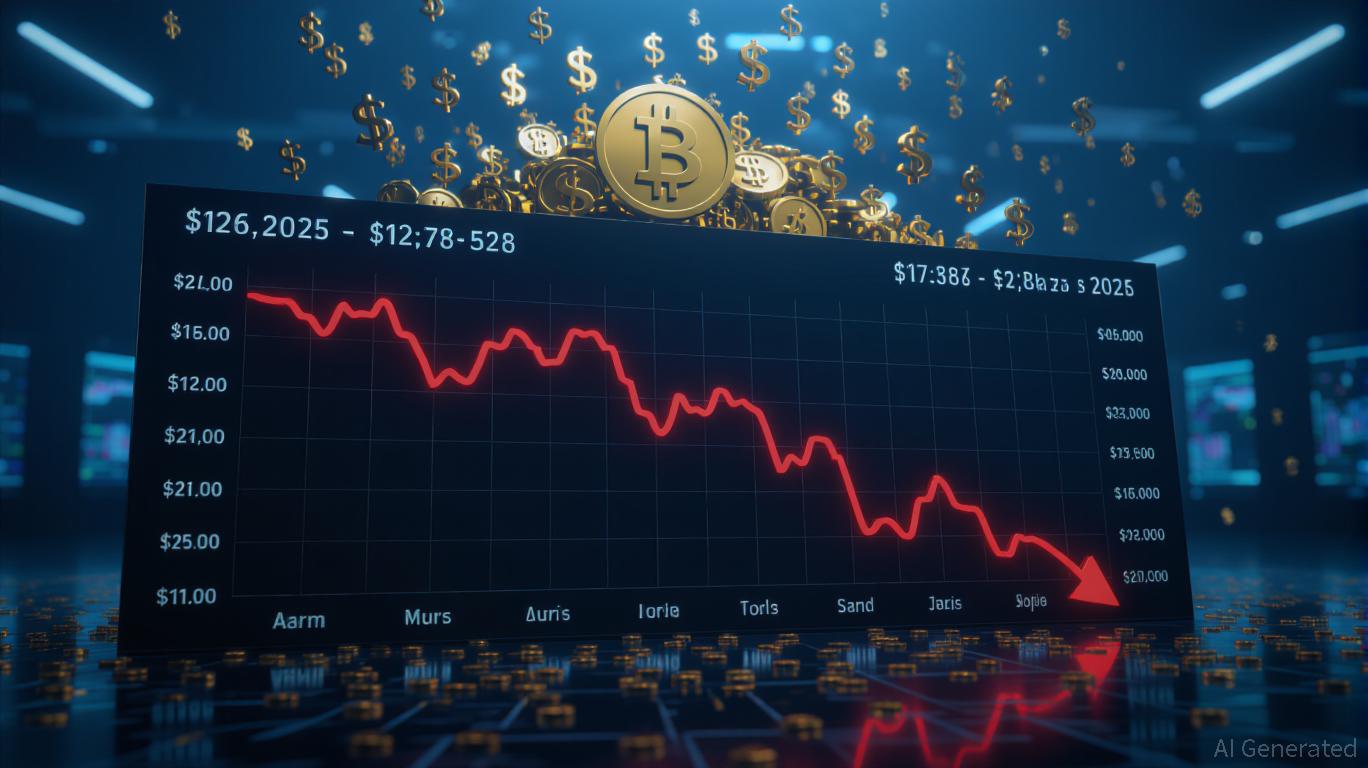What Led to the Latest BTC Plunge and Its Implications for Cryptocurrency Investors?
- Bitcoin's 2025 crash erased $1T in value, exposing systemic risks from macroeconomic shocks and regulatory gaps. - Trump's tariff rhetoric triggered $20B in crypto liquidations, while SEC's Fuse Energy decision highlighted fragmented oversight. - Retail panic contrasted with institutional resilience, as IBIT and gold ETFs saw $5.8B inflows amid market instability. - Experts debate Bitcoin's fundamentals, with some forecasting $100k-$135k ranges and others warning of prolonged volatility.
Systemic Risk Triggers: Regulatory Uncertainty and Macro Shocks
This market crash was the result of several converging factors, with the most significant being the abrupt intensification of tariff threats from the Trump administration in mid-October 2025. This development sparked a worldwide shift toward risk aversion, resulting in $20 billion in leveraged positions being liquidated in a single day—the largest such event in the history of cryptocurrencies

Regulatory measures—or the absence of them—were also a contributing factor. Although the U.S. Securities and Exchange Commission (SEC)
Market Psychology: Panic, Hedging, and Institutional Resilience
This downturn has exposed the delicate mindset of crypto traders. Many retail investors, who had taken on leveraged positions, suffered widespread liquidations as Ethereum alone
Despite the turmoil, institutional investors have demonstrated stability. The iShares Bitcoin Trust (IBIT) saw $3.3 billion in new investments in June 2025, while gold funds such as SPDR Gold Shares (GLD) attracted $2.5 billion, indicating a move toward safer assets
Regulatory Responses and Financial Stability
Regulatory intervention has been limited in the wake of the crisis. The SEC’s recent ruling on Fuse Energy marks progress toward clearer guidelines but does little to address the broader systemic risks
There is no consensus among analysts about what comes next. Optimists such as Standard Chartered and Bitwise
What This Means for Investors
This sharp downturn serves as a crucial lesson for crypto investors. The combination of unclear regulations, global economic shocks, and leveraged trading has created a highly unpredictable environment where even experienced participants can incur significant losses. Effective diversification and risk management have become essential. While institutional players continue to add to their BTC holdings, individual investors should proceed with caution, avoid excessive leverage, and pay close attention to regulatory developments.
The SEC’s gradual moves toward clearer rules, such as its decision on Fuse Energy, provide some optimism for a more orderly market. However, until major risks like cross-market contagion and fragmented regulation are resolved, cryptocurrencies will continue to be a high-risk, high-reward investment. The current market is testing the endurance of its participants, and the experiences of late 2025 will influence the next phase of the crypto industry’s growth.
Disclaimer: The content of this article solely reflects the author's opinion and does not represent the platform in any capacity. This article is not intended to serve as a reference for making investment decisions.
You may also like
DeFi Faces a Crisis of Confidence: Token Examination, Tether’s Rating Cut, and Intensified SEC Crackdowns Converge
- Edel Finance's token launch faces scrutiny as 160 linked wallets allegedly acquired 30% of its supply pre-launch, triggering a 62% price drop. - Tether's S&P downgrade to "weak" highlights risks from $12.9B gold and $9.9B bitcoin reserves, with gold holdings rivaling central banks. - SEC intensifies oversight, fining Yida Gao $4M for crypto fund misrepresentation while exchanges warn against crypto exemptions. - DeFi projects like World Liberty Financial spend $10M on token buybacks, yet WLFI remains dow

The Recent Rise in Astar (ASTR) Value: Unveiling the Driving Forces Behind the Latest Surge
- Astar (ASTR) price surge driven by institutional adoption, robust on-chain metrics, and cross-chain innovation, with TVL rising to $2.38M in Q3 2025. - Astar 2.0's 150,000 TPS throughput and dynamic tokenomics (4.32% inflation) attract institutional investors seeking scalable, stable blockchain solutions. - Partnerships with Sony , Toyota , and others validate Astar's enterprise-grade infrastructure, aligning with crypto-traditional finance convergence trends. - Projected $0.80–$1.20 price target by 2030

Hayes Focuses on High-Yield DeFi Initiatives Amid Growing Institutional Interest
- Arthur Hayes acquired 2.01M ENA , 218K PENDLE, and 33K ETHFI tokens via Cumberland, totaling $1.42M in DeFi projects focused on yield optimization and automated market-making. - The purchases highlight growing institutional interest in DeFi protocols offering structured products and tokenized derivatives, with ENA and PENDLE leading in governance and yield strategies. - Hayes's strategy aligns with leveraging on-chain data to target undervalued assets, potentially amplifying market sentiment but exposing

Bitcoin Updates: Major Institutions Propel Bitcoin Beyond $90K Amid Expanding ETF Investments
- Institutional investors drove Bitcoin above $90,000 in November 2025 through strategic ETF allocations, including Texas's $10M initiative and Harvard's $443M IBIT stake. - ETF flows showed $238M inflows into spot Bitcoin ETFs despite prior $3.5B outflows, reflecting maturing institutional diversification and crypto-friendly government frameworks. - Texas's planned self-custodied Bitcoin transition and Mubadala's tripled IBIT holdings highlighted growing acceptance of Bitcoin as a strategic reserve asset.
